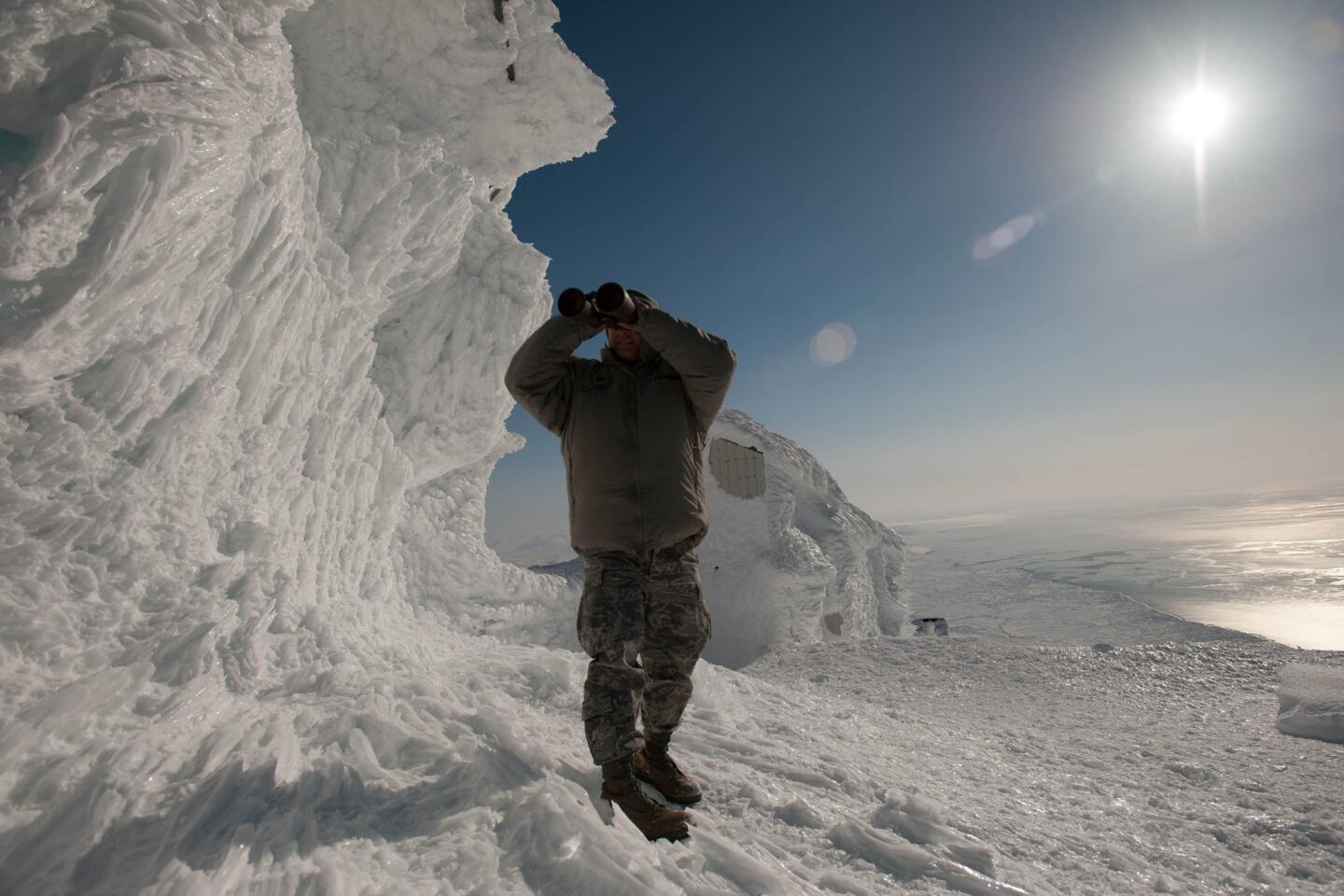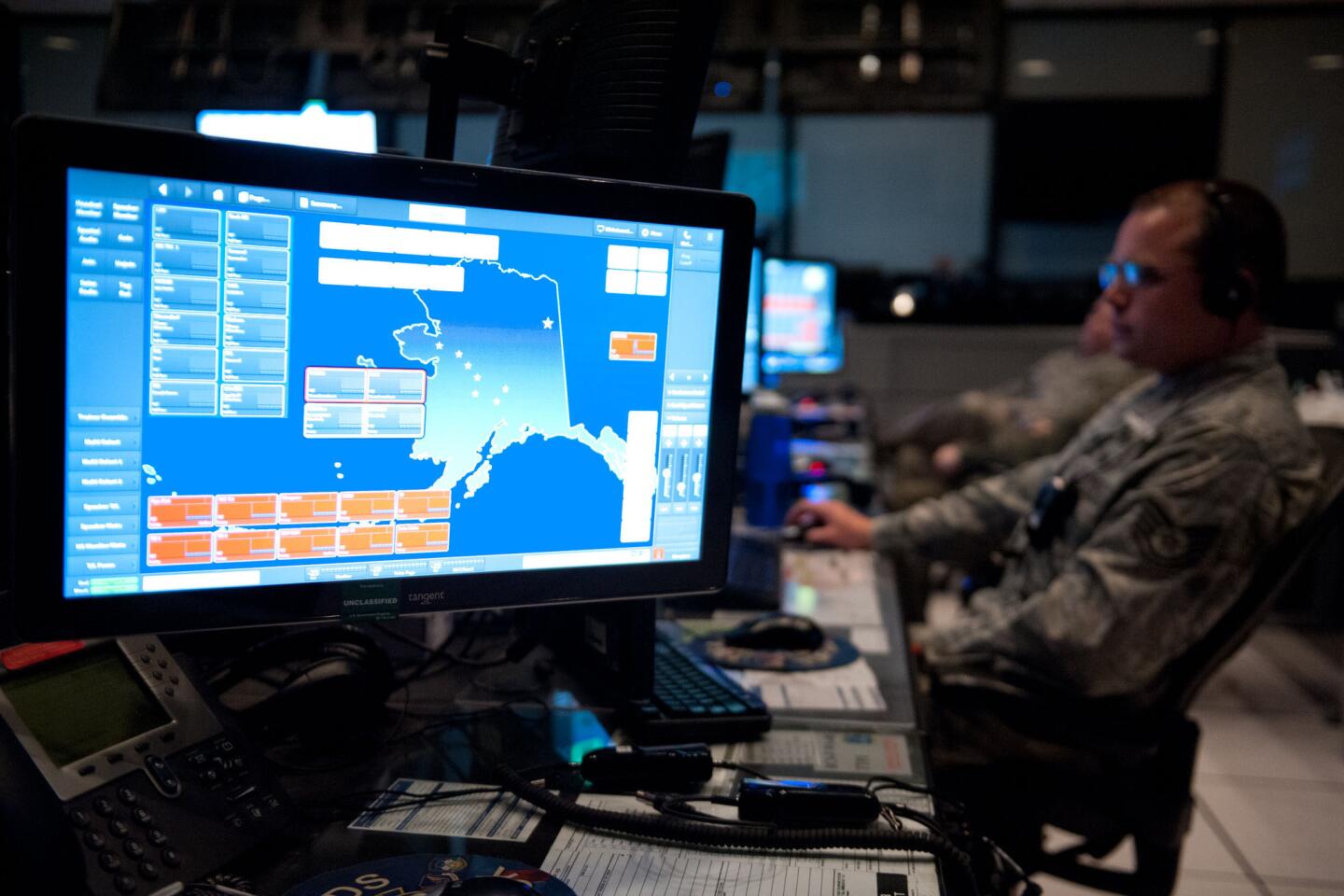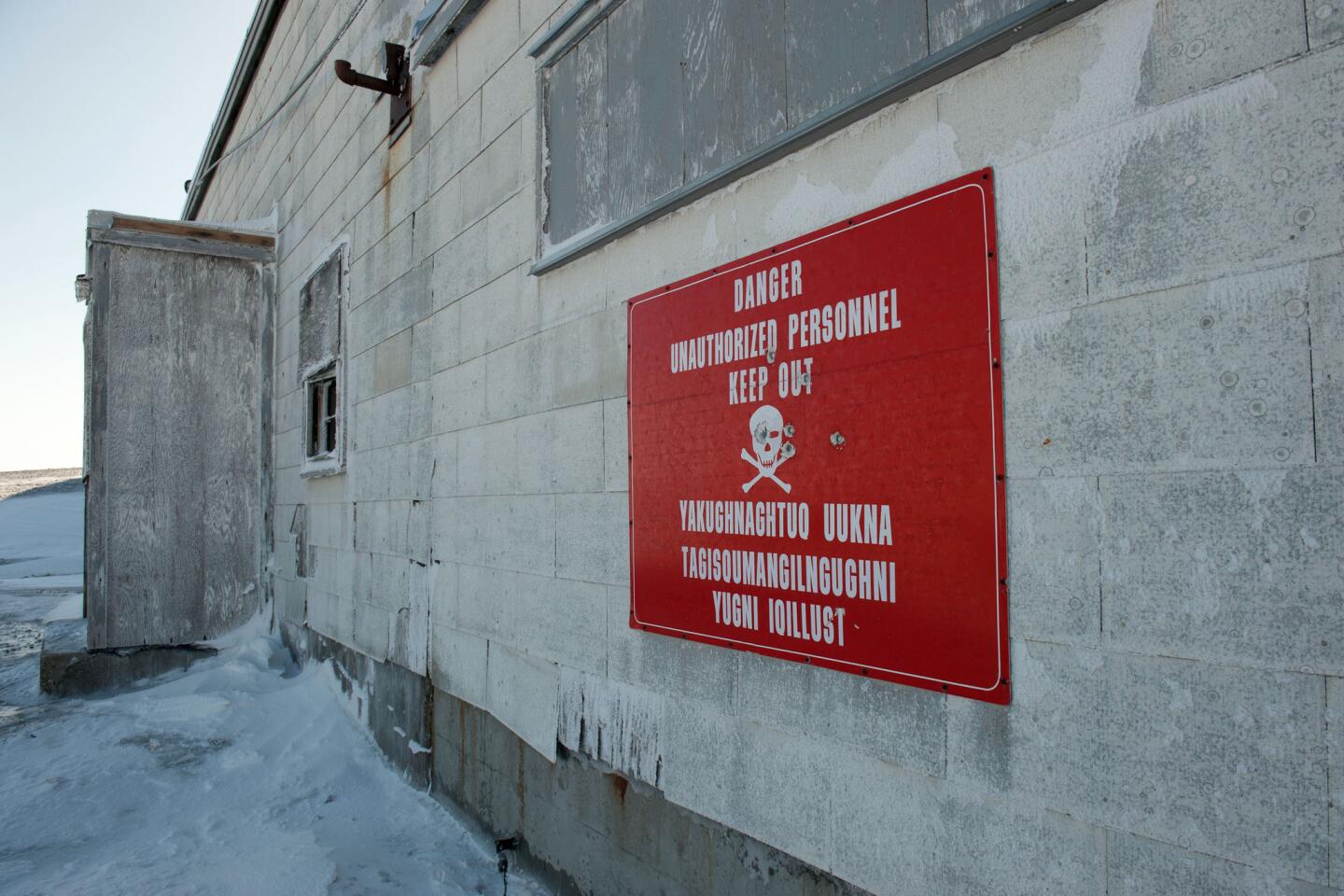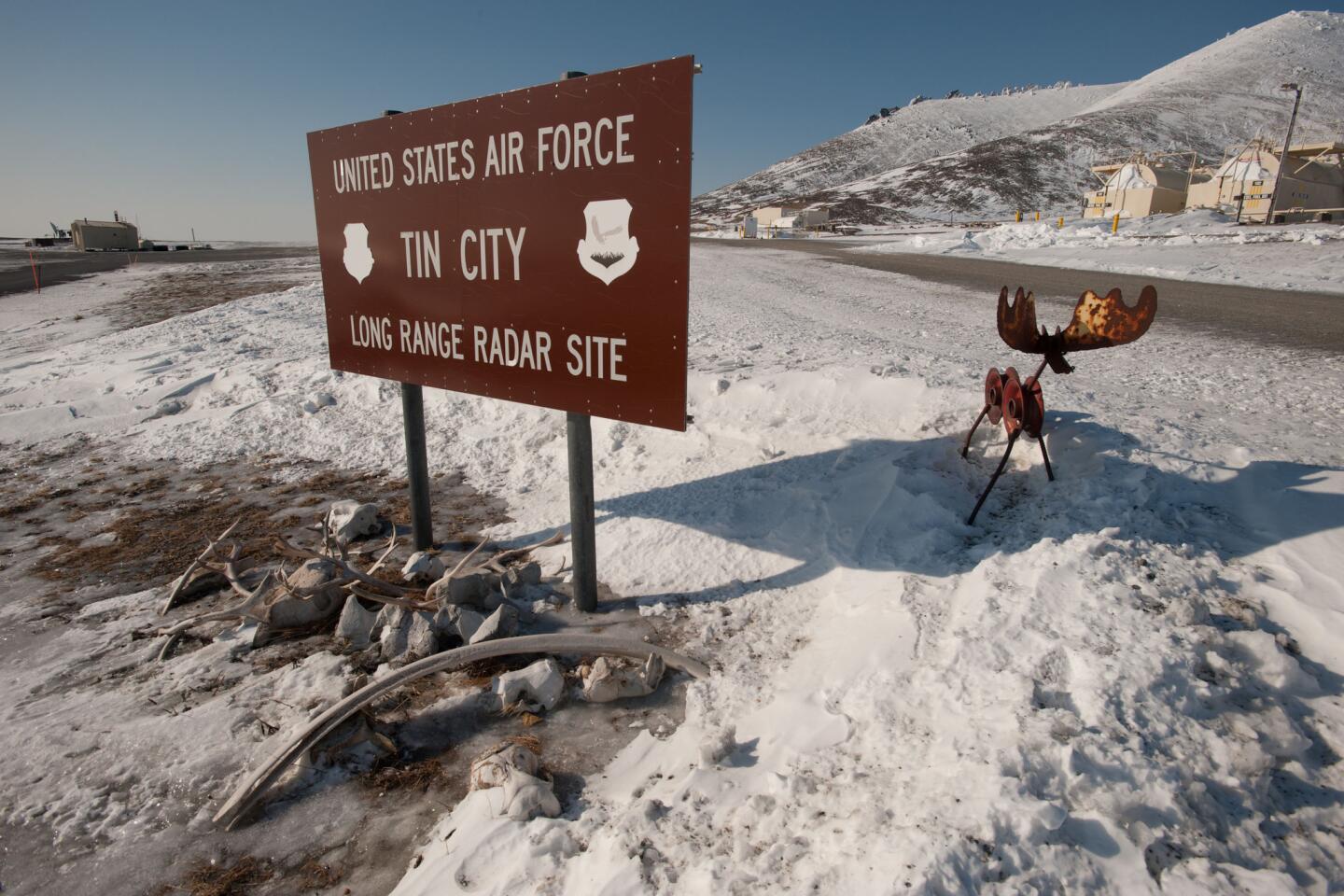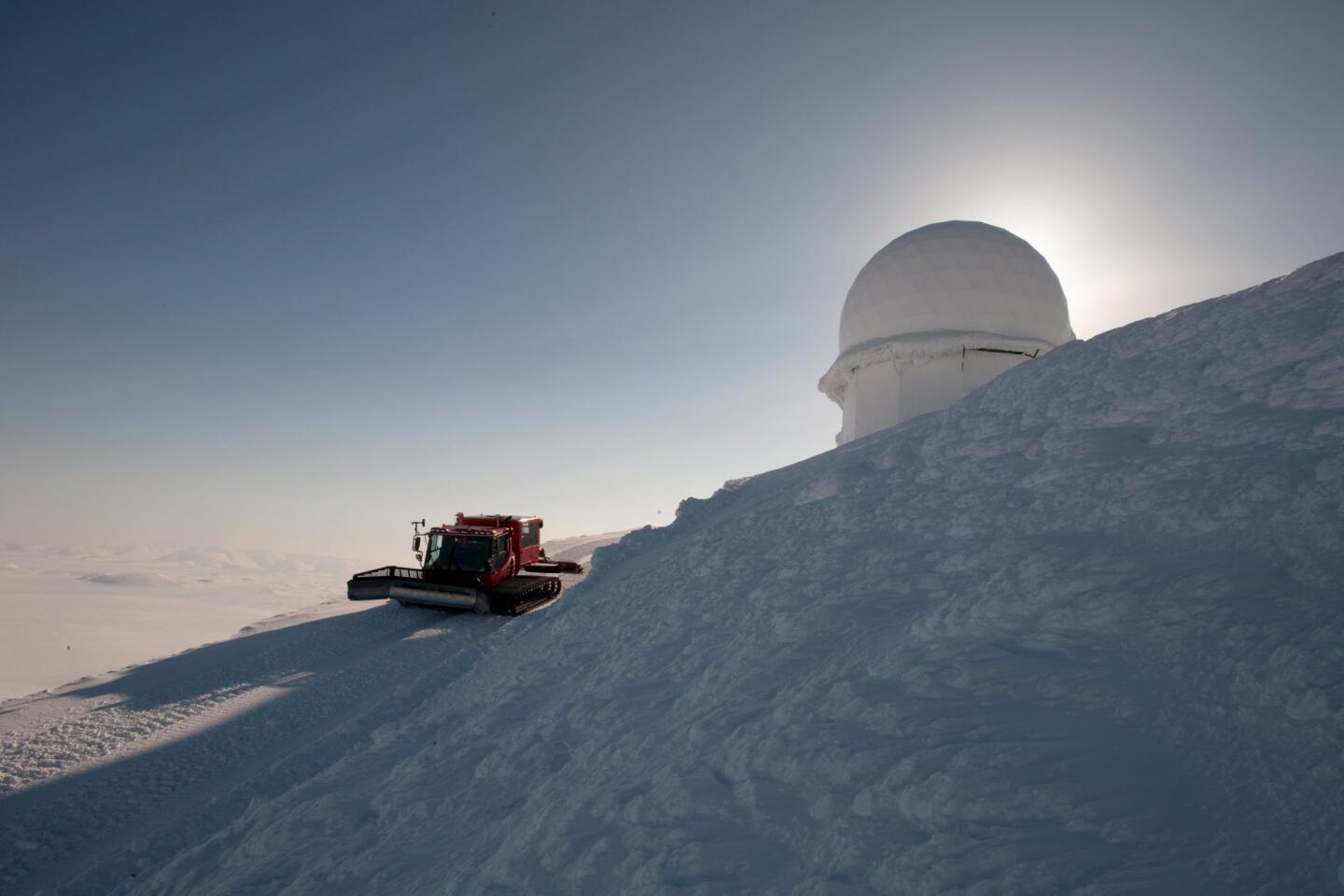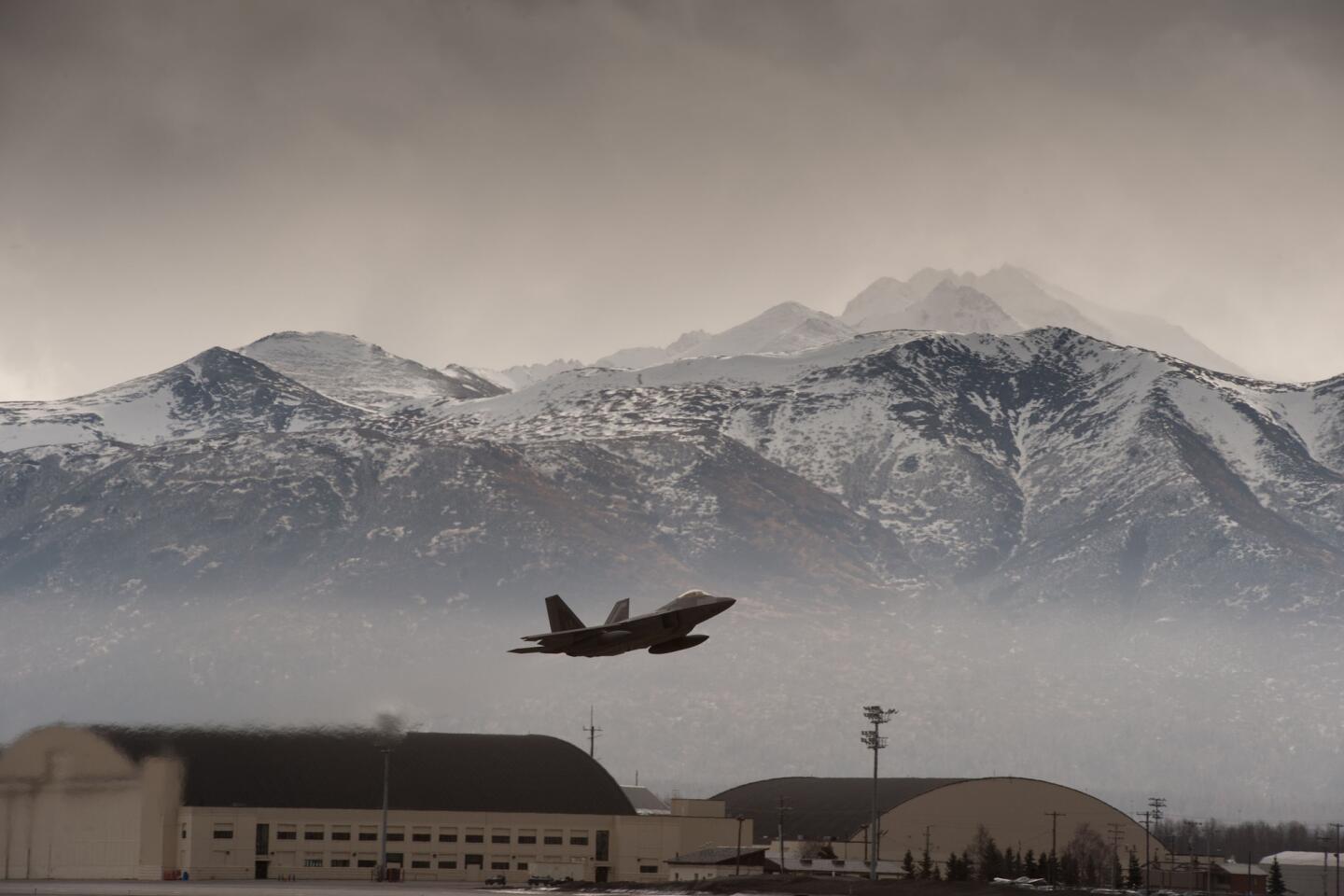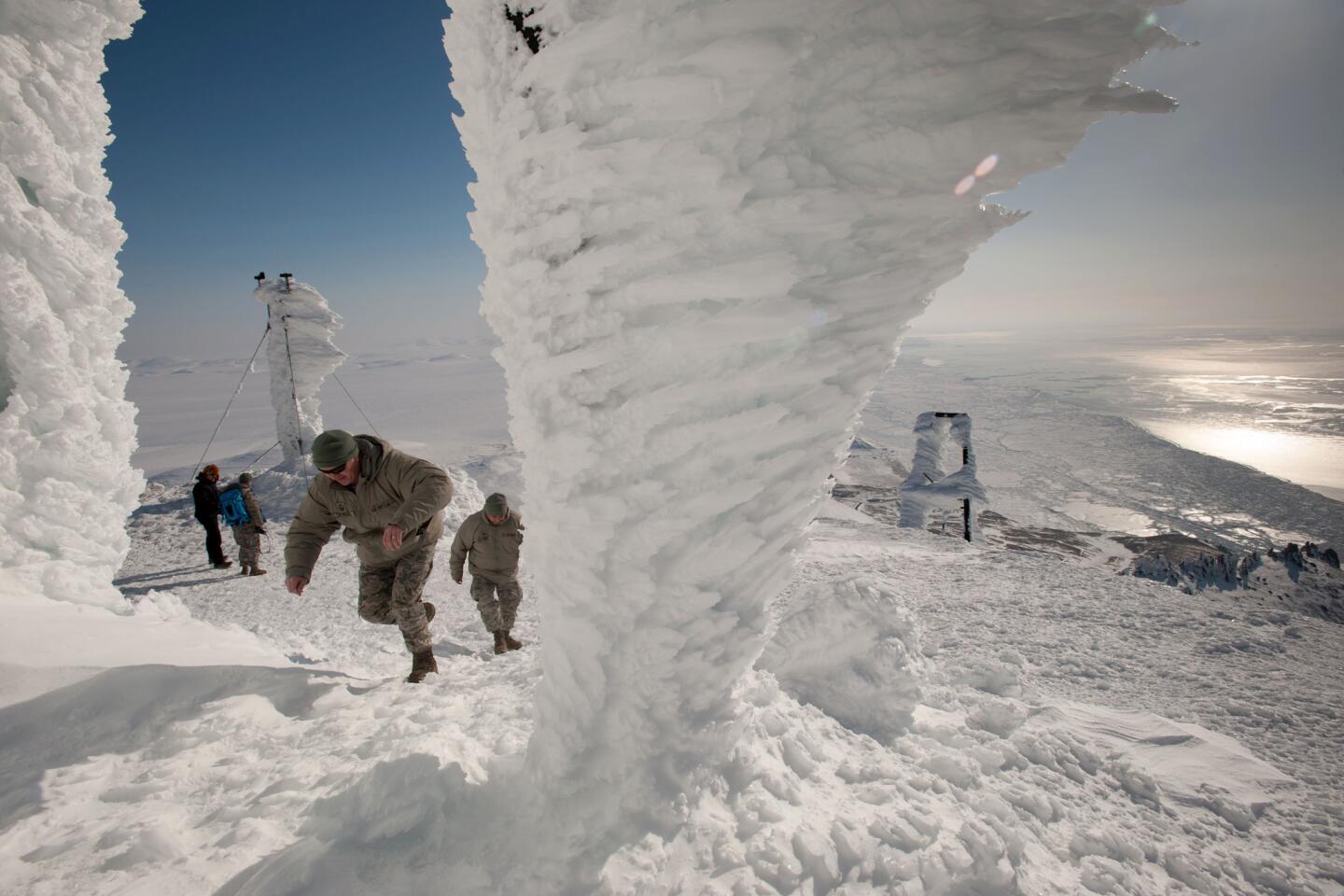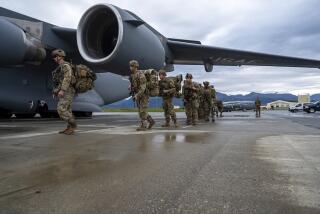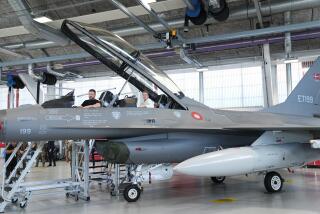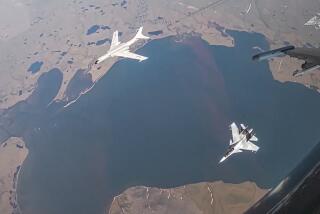Intent of Russian military aircraft near U.S. shores remains unclear
Reporting from TIN CITY, Alaska — The air is frigid and the wind is howling as Air Force Col. Frank Flores lifts a pair of foot-long binoculars and studies a hazy dot about 50 miles west across the Bering Strait.
“That’s the mainland there,” he shouts above the gusts.
It’s Siberia, part of Russia, on the Asian mainland.
Named for an old mining camp, Tin City is a tiny Air Force installation atop an ice-shrouded coastal mountain 50 miles below the Arctic Circle, far from any road or even trees. The Pentagon took over the remote site decades ago and built a long-range radar station to help detect a surprise attack from the Soviet Union.
At least from this frozen perch, America’s closest point to Vladimir Putin’s Russia, the Cold War is turning warm again.
U.S. F-22 fighter jets scrambled about 10 times last year — twice as often as in 2013 — to monitor and photograph Russian Tu-95 “Bear” bombers and MiG-31 fighter jets that flew over the Bering Sea without communicating with U.S. air controllers or turning on radio transponders, which emit identifying signals.
The Russian flights are in international airspace, and it’s unclear whether they are testing U.S. defenses, patrolling the area or simply projecting a newly assertive Moscow’s global power.
“They’re obviously messaging us,” said Flores, a former Olympic swimmer who is in charge of Tin City and 14 other radar stations scattered along the vast Alaskan coast. “We still don’t know their intent.”
U.S. officials view the bombers — which have been detected as far south as 50 miles off California’s northern coast — as deliberately provocative. They are a sign of the deteriorating ties between Moscow and the West since Russia’s annexation of Ukraine’s Crimea region in March of last year and its military intervention to support separatists in eastern Ukraine.
Similar Russian flights in Europe have irked leaders in Britain, Ireland, Sweden, Norway and elsewhere. In January, British authorities were forced to reroute commercial aircraft after Russian bombers flew over the English Channel with their transponders off.
In all, the North Atlantic Treaty Organization says its jets scrambled to monitor Russian warplanes around Europe more than 100 times last year, about three times as many as in 2013. Russian air patrols outside its borders were at their highest level since the Soviet Union collapsed in 1991, NATO said.
Russian Defense Minister Sergei Shoigu said in a statement in November, as tensions heightened over Ukraine, that Russia’s strategic bombers would resume patrols in both the Atlantic and the Pacific.
“In the current situation we have to maintain military presence in the western Atlantic and eastern Pacific, as well as the Caribbean and the Gulf of Mexico,” he said.
Although the Arctic draws less attention, Russia is flexing muscles there after years of decline. President Vladimir Putin’s government has announced plans to reopen 10 former Soviet-era military bases, including 14 airfields, that were shuttered along the Arctic seaboard after the Cold War.
A shipyard in Severodvinsk, the largest city on the Russian Arctic Coast, has begun building four nuclear-powered submarines for the first time in decades, according to Russian news reports. The Pentagon says the reports are accurate.
The Pentagon has responded by spending $126 million last year to upgrade Tin City and other coastal radar stations in Alaska. It also has added military exercises with northern allies — including flying U.S. strategic bombers over the Arctic for the first time since 2011.
Last week, four B-52s flew from bases in Nebraska and Louisiana on simultaneous, round-trip sorties to the Arctic and North Sea regions, the Air Force announced. Along the way, the bomber crews engaged in “air intercept maneuvers” with fighter jets from Canada, England and the Netherlands.
The Air Force has said it may base the first squadrons of next-generation F-35 fighter jets at Eielson Air Force Base in Alaska starting next year.
The buildup comes as melting ice caps are opening valuable new sea lanes, sparking a scramble for oil and other untapped natural resources by the eight nations with territorial or maritime claims in the far north.
“We’re experiencing a reawakening of the strategic importance of the Arctic,” said Navy Adm. William E. Gortney, commander of the Pentagon’s Northern Command and of the North American Aerospace Defense Command.
“Is this a second Cold War? It doesn’t matter what we think,” Gortney said. “Maybe they think the Cold War never ended.”
Analysts say Putin’s government may be ordering the bomber flights as a morale booster for a military that saw its ships turned to scrap, its aircraft grounded and its bases closed after the Cold War.
“The ability to project military power from bases in the Arctic region is one area in which they are still capable,” said Christopher Harmer, a military analyst at the Institute for the Study of War, a nonpartisan public policy group in Washington.
“This is much less compared to what they were doing in the Cold War,” said Dmitry Gorenburg, a research analyst at the nonprofit Center for Naval Analyses in Washington. “I don’t think they’re threatening anyone. They just want to make sure that no one comes into the Arctic and messes with them.”
The U.S. military downsized but never fully disengaged in the Arctic after the Cold War.
If an alarm sounds, fighter pilots still sometimes slide down gleaming fireman poles at Joint Base Elmendorf-Richardson in Anchorage and run to F-22 Raptors kept idling in small hangars. The jets, in “hot-cocked” condition, carry fully armed cannons and missiles.
In an underground room on the base, rows of radar technicians sit at glowing screens watching small crescent-shaped blips, each representing an aircraft moving in Alaskan airspace. On the wall, four large screens track aircraft across the Arctic, including Russian airspace.
The wall also holds 261 plaques with red stars. Each represents a successful U.S. intercept of Russian aircraft. A total of 424 Russian planes have been detected since 1983, mostly during the Cold War.
“If they come this way, we’re going to track them, determine who they are and what their intent is,” said Maj. Carrie Howard, an officer in charge of the air defense squadron.
Most of the time, the blips are commercial planes that identify themselves by emitting transponder codes or communicating with regional air controllers. But some aircraft stay silent.
If commanders here decide to respond, they grab a tan telephone marked “scramble” in red letters. It rings in a wardroom by the runway where F-22 pilots are always on duty.
“When the phone rings, it stops your heart, it rings so loud,” said one pilot, who asked not to be named for his security.
Once airborne, the pilots are supposed to get a visual identification of the other aircraft. But the F-22 can fly nearly three times as fast as the lumbering Tu-95 bomber, so slowing down is the challenge.
“You want to go fast,” the pilot said. “The jet wants to go fast. But you just have to ease up alongside of them.”
On Sept. 17, he scrambled in pursuit of radar blips that turned out to be two Russian “Bears,” two MiG-31s and two refueling tankers. The American pilot drew close, radioed his sighting back to Anchorage and returned to base.
“Our presence was felt,” the pilot said. “That’s all that’s needed.”
It was difficult to feel much of anything but cold at Tin City on a recent afternoon, where the temperature was far below zero, the wind was bone-chilling and the world faded into a blinding white of snow, ice and fog.
Vance Spaulding, 53, and Jeff Boulds, 52, two contractors, spend up to four months maintaining the radar site before they fly out on break.
While here, they hunt musk ox, a long-haired, long-horned animal known for its strong odor, and Arctic hare, which they claim can grow to 20 pounds or more, on the surrounding coastal plain.
“We get cooped up here, so we try to get out in the open whenever we can,” Boulds said. “But I never seen no Russkies. Not yet anyway.”
Twitter: @wjhenn
MORE:
Aggression, not just depression, led copilot to crash plane, experts say
Islamic State atrocities feared at Palestinian camp in Syria
Iraq’s Rambo is the scourge of Islamic State militants
More to Read
Sign up for Essential California
The most important California stories and recommendations in your inbox every morning.
You may occasionally receive promotional content from the Los Angeles Times.
